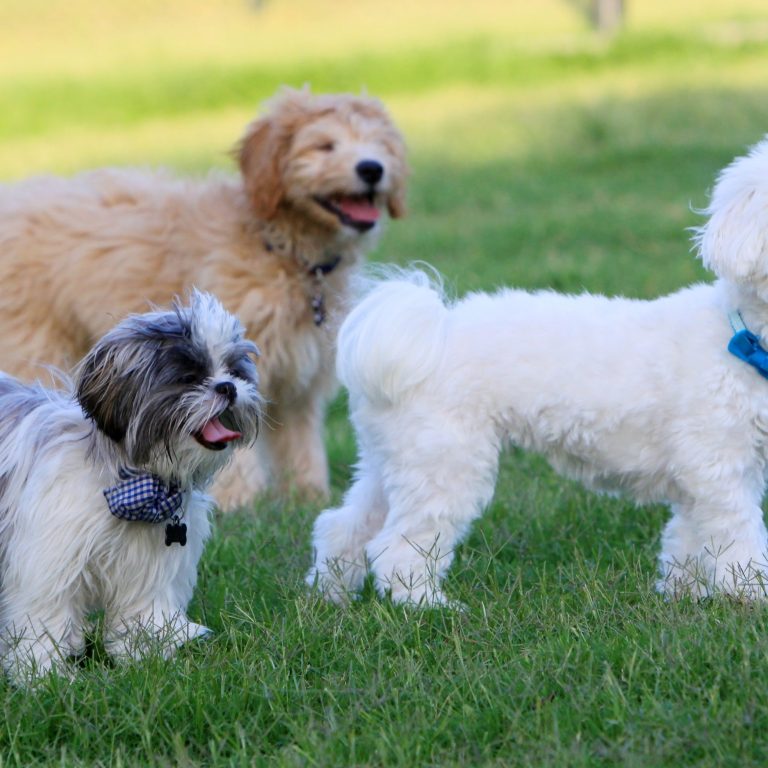4. Puzzling Delights: Elevate Mealtime with Dog Puzzle Feeders
Enhancing Mealtime for Your Dog
When it comes to mealtime, you can elevate the experience for your furry friend by introducing interactive pet toys. These toys not only make mealtime more enjoyable but also provide numerous benefits for your dog’s overall well-being. One such interactive pet toy that is gaining popularity is the dog puzzle feeder.
The Benefits of Interactive Pet Toys
Interactive pet toys offer several advantages for your dog. They provide mental stimulation, engage their natural instincts, and help prevent boredom. Dogs are naturally curious and intelligent creatures, and interactive toys allow them to use their problem-solving skills in a fun and rewarding way.
By incorporating interactive toys into mealtime, you can turn a routine activity into an exciting and engaging experience for your dog. These toys make your dog work for their food, encouraging them to think, explore, and engage with their environment. This mental stimulation can help prevent behavioral issues that may arise from boredom or lack of mental engagement.
Introduction to Dog Puzzle Feeders
Dog puzzle feeders are a type of interactive pet toy specifically designed to make mealtime more challenging and engaging. These feeders are designed with various compartments, obstacles, and mechanisms that require your dog to figure out how to access their food.
The primary purpose of a dog puzzle feeder is to slow down your dog’s eating pace. Many dogs tend to eat their food too quickly, which can lead to digestive problems and potential weight gain. The puzzle feeder encourages your dog to eat at a slower pace by making them work for their food. This can help improve digestion and prevent issues like bloating.
Dog puzzle feeders come in various types, each offering a unique challenge for your dog. These include treat-dispensing toys, interactive food bowls, and puzzle boards and mats. Each type of puzzle feeder has its own benefits and features, catering to different dogs’ preferences and abilities.
To explore more options for interactive pet toys that promote mental stimulation, you can check out our article on puzzle toys for dogs. These toys can provide hours of entertainment and mental exercise for your canine companion.
By incorporating a dog puzzle feeder into your dog’s mealtime routine, you can transform a mundane task into an exciting and enriching experience. Not only will your dog enjoy the challenge, but they will also reap the benefits of mental stimulation and improved eating habits. When choosing a dog puzzle feeder, consider factors such as the difficulty level, material, and safety aspects. Remember to supervise your dog during playtime with these toys to ensure a safe and enjoyable experience.
Mental Stimulation for Dogs
When it comes to keeping your furry friend happy and healthy, mental stimulation plays a vital role. Dogs, like humans, thrive on mental challenges that help keep their minds sharp and engaged. Providing opportunities for mental stimulation can prevent boredom, reduce destructive behavior, and promote overall well-being. One effective way to achieve this is through the use of dog puzzle feeders.
Importance of Mental Stimulation
Dogs are intelligent creatures that require more than just physical exercise. Mental stimulation is essential for their cognitive development and emotional satisfaction. Engaging their minds through interactive activities helps prevent boredom and can even alleviate certain behavioral issues. Dogs that receive mental stimulation are often more content, less prone to anxiety, and have a better overall quality of life.
By incorporating mental stimulation into your dog’s routine, you can provide them with a sense of purpose and fulfillment. Mental exercises challenge their problem-solving skills, improve their focus, and boost their confidence. One way to achieve this is by introducing dog puzzle feeders.
How Dog Puzzle Feeders Promote Mental Stimulation
Dog puzzle feeders are innovative toys that combine mealtime with mental exercise. These specialized feeders are designed to make your dog work for their food, providing them with a rewarding and engaging experience. The concept is simple: instead of placing their food in a regular bowl, you use a puzzle feeder that requires your dog to solve a task or manipulate the toy to access their meal.
The main goal of dog puzzle feeders is to encourage your pet to use their problem-solving skills and tap into their natural instincts. The puzzles can vary in complexity, from simple treat-dispensing toys to more intricate puzzle boards and mats. As your dog interacts with the puzzle feeder, they are mentally stimulated and engaged, similar to how they would be in the wild while foraging for food.
By incorporating puzzle feeders into your dog’s mealtime routine, you not only provide them with mental stimulation but also extend the duration of their meals. This can be particularly beneficial for dogs who tend to eat their meals too quickly. The engagement and challenge of the puzzle feeder slow down their eating pace, promoting better digestion and reducing the risk of gastrointestinal issues.
To explore different types of dog puzzle feeders, such as treat-dispensing toys, interactive food bowls, and puzzle boards, check out our article on puzzle toys for dogs. By incorporating these mentally stimulating toys into your dog’s routine, you can enhance their overall well-being and provide them with the mental exercise they need to thrive.
Types of Dog Puzzle Feeders
When it comes to dog puzzle feeders, there are various options available that can engage your furry friend’s mind and make mealtime more exciting. Let’s explore three popular types of dog puzzle feeders: treat-dispensing toys, interactive food bowls, and puzzle boards and mats.
Treat-Dispensing Toys
Treat-dispensing toys are a favorite among dog owners who want to provide mental stimulation during mealtime. These toys are designed to hold treats or kibble inside, and your dog has to figure out how to access the food. By rolling, tossing, or manipulating the toy, your dog will be rewarded with treats as they successfully solve the puzzle.
Treat-dispensing toys come in various shapes and sizes, allowing you to choose one that suits your dog’s preferences and difficulty level. Some toys have adjustable openings, enabling you to make the puzzle more challenging as your dog becomes more skilled. These toys not only keep your dog entertained but also encourage problem-solving skills. For more information on puzzle toys for dogs, check out our article on puzzle toys for dogs.
Interactive Food Bowls
Interactive food bowls are another type of dog puzzle feeder that can make mealtime more engaging. These bowls typically feature different compartments or obstacles that require your dog to work for their food. Some bowls have ridges or mazes, while others have sliding or rotating parts that your dog needs to navigate to access their meal.
By using an interactive food bowl, your dog will have to use their paws, nose, or tongue to move the food around, promoting mental stimulation and slowing down their eating pace. These bowls are particularly useful for dogs who tend to eat too quickly. It’s important to choose a bowl that is suitable for your dog’s size and offers an appropriate level of difficulty. To learn more about dog enrichment toys, including interactive food bowls, visit our article on dog enrichment toys.
Puzzle Boards and Mats
Puzzle boards and mats are becoming increasingly popular as dog puzzle feeders. These interactive mats or boards have various compartments or pockets where you can hide treats or food. Your dog will have to use their problem-solving skills to sniff out the treats and figure out how to access them.
These puzzle feeders can be a great way to mentally stimulate your dog while also providing a fun and engaging activity. They come in different designs and difficulty levels, allowing you to choose one that is suitable for your dog’s abilities and preferences. Puzzle boards and mats are particularly beneficial for dogs who enjoy using their sense of smell. For more information on mental stimulation toys for dogs, including puzzle boards and mats, visit our article on mental stimulation toys for dogs.
By incorporating these different types of dog puzzle feeders into your dog’s mealtime routine, you can provide mental stimulation, slow down their eating pace, and make mealtime a delightful and engaging experience. Experiment with different puzzle feeders to find the ones that your dog enjoys the most and continue to challenge their problem-solving abilities. Remember to choose puzzle feeders that are appropriate for your dog’s size, difficulty level, and specific needs.
Choosing the Right Dog Puzzle Feeder
When it comes to selecting a dog puzzle feeder, there are several factors to consider to ensure you choose the right one for your furry friend. Taking into account the size and difficulty level, material and durability, as well as safety considerations, will help you make an informed decision.
Considerations for Size and Difficulty Level
It’s important to choose a puzzle feeder that is appropriate for your dog’s size and skill level. Consider the size of the puzzle feeder and the size of the treats or kibble it can hold. The feeder should be challenging enough to keep your dog engaged and mentally stimulated, but not too difficult that it causes frustration.
Table: Size and Difficulty Level of Dog Puzzle Feeders
| Size | Difficulty Level |
|---|---|
| Small | Easy |
| Medium | Moderate |
| Large | Challenging |
Material and Durability Factors
The material and durability of the puzzle feeder are important considerations for long-term use. Look for puzzle feeders made from sturdy materials that can withstand your dog’s chewing and play. Common materials include plastic, rubber, or wood. Ensure that the puzzle feeder is designed to withstand the strength and behavior of your dog.
Safety Considerations
Your dog’s safety is paramount when choosing a puzzle feeder. Inspect the puzzle feeder for any small parts or loose pieces that could be potentially hazardous if swallowed. Additionally, ensure that the puzzle feeder is free from any toxic materials or chemicals that could harm your dog. Regularly inspect the puzzle feeder for any signs of wear and tear, and replace it if necessary.
By considering the size and difficulty level, material and durability, and safety aspects of a puzzle feeder, you can select the perfect one for your canine companion. For more information on interactive pet toys that promote mental stimulation, check out our article on puzzle toys for dogs. Remember, providing your dog with a variety of mental stimulation toys, such as puzzle feeders, dog enrichment toys, and mental stimulation toys, is a great way to keep them entertained and engaged.
Introducing Your Dog to Puzzle Feeders
When introducing your dog to puzzle feeders, it’s important to take a gradual approach to ensure a positive experience. By following a few simple steps, you can help your dog understand and enjoy the benefits of these interactive toys. Here are some key points to consider:
Gradual Introduction and Training
Start by introducing the puzzle feeder to your dog in a calm and positive environment. Allow them to explore the feeder without any food inside, so they can become familiar with its shape, texture, and functionality. Encourage their curiosity by praising and rewarding them for interacting with the puzzle feeder.
Once your dog is comfortable with the puzzle feeder, you can begin introducing food. Start with easy puzzles that have larger openings or simpler mechanisms to allow your dog to easily obtain the food rewards. This will help build their confidence and understanding of how the puzzle feeder works.
As your dog becomes more proficient with easier puzzles, gradually increase the difficulty level by using more complex puzzle feeders. This will provide them with mental stimulation and keep their interest piqued. Remember to always supervise your dog during their puzzle-solving sessions to ensure their safety and to prevent any frustration.
Monitoring and Supervision
While puzzle feeders are designed to entertain and challenge your dog, it’s essential to monitor their behavior during playtime. Always supervise your dog to ensure they are engaging with the puzzle feeder correctly and not becoming frustrated or overly aggressive.
It’s also important to ensure that your dog doesn’t chew or swallow any parts of the puzzle feeder. Regularly inspect the puzzle feeder for signs of wear and tear, and replace it if necessary to maintain its safety and functionality.
Troubleshooting Common Challenges
Some dogs may initially face challenges when using puzzle feeders. If your dog is struggling to solve the puzzles or losing interest, try these troubleshooting tips:
-
Encourage and assist: Use treats or their favorite food to entice your dog and guide them through the puzzle-solving process. This can help build their confidence and understanding.
-
Modify the difficulty: If the puzzle feeder is too challenging for your dog, simplify it by partially opening the compartments or using larger treats. Gradually increase the difficulty level as your dog becomes more skilled.
-
Rotate puzzles: To keep your dog engaged and prevent boredom, rotate different puzzle feeders regularly. This will provide variety and ensure continued mental stimulation.
-
Seek professional guidance: If your dog is consistently struggling or showing signs of frustration, consider seeking advice from a professional dog trainer or behaviorist. They can provide personalized guidance to address any specific challenges.
By gradually introducing your dog to puzzle feeders, monitoring their progress, and troubleshooting any challenges, you can help them embrace these interactive toys and enjoy the mental stimulation they provide. For more information on puzzle toys for dogs and other mental stimulation options, check out our article on dog enrichment toys.







